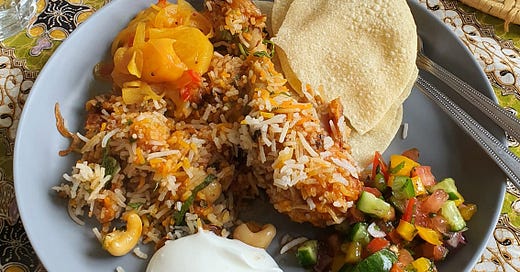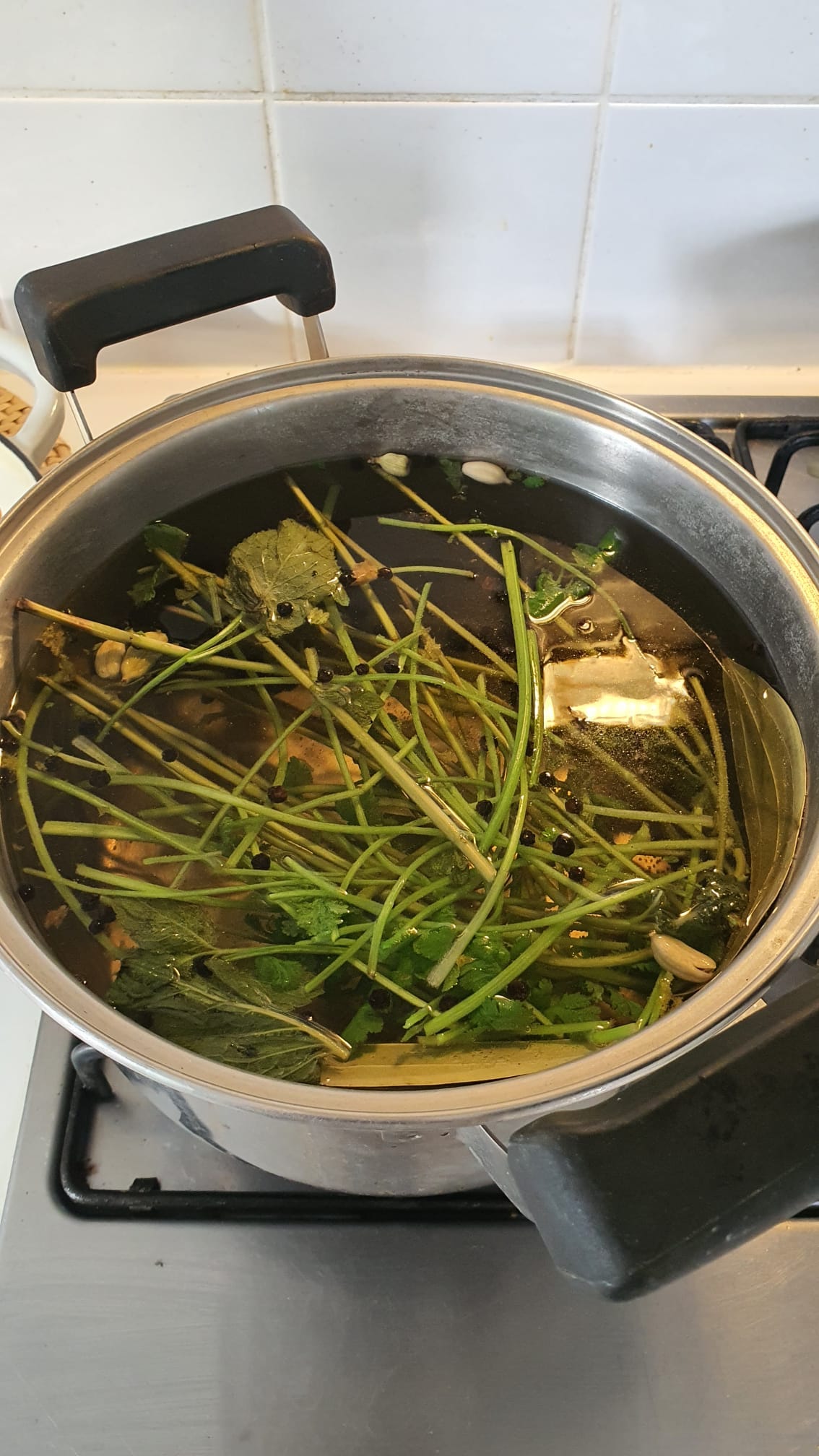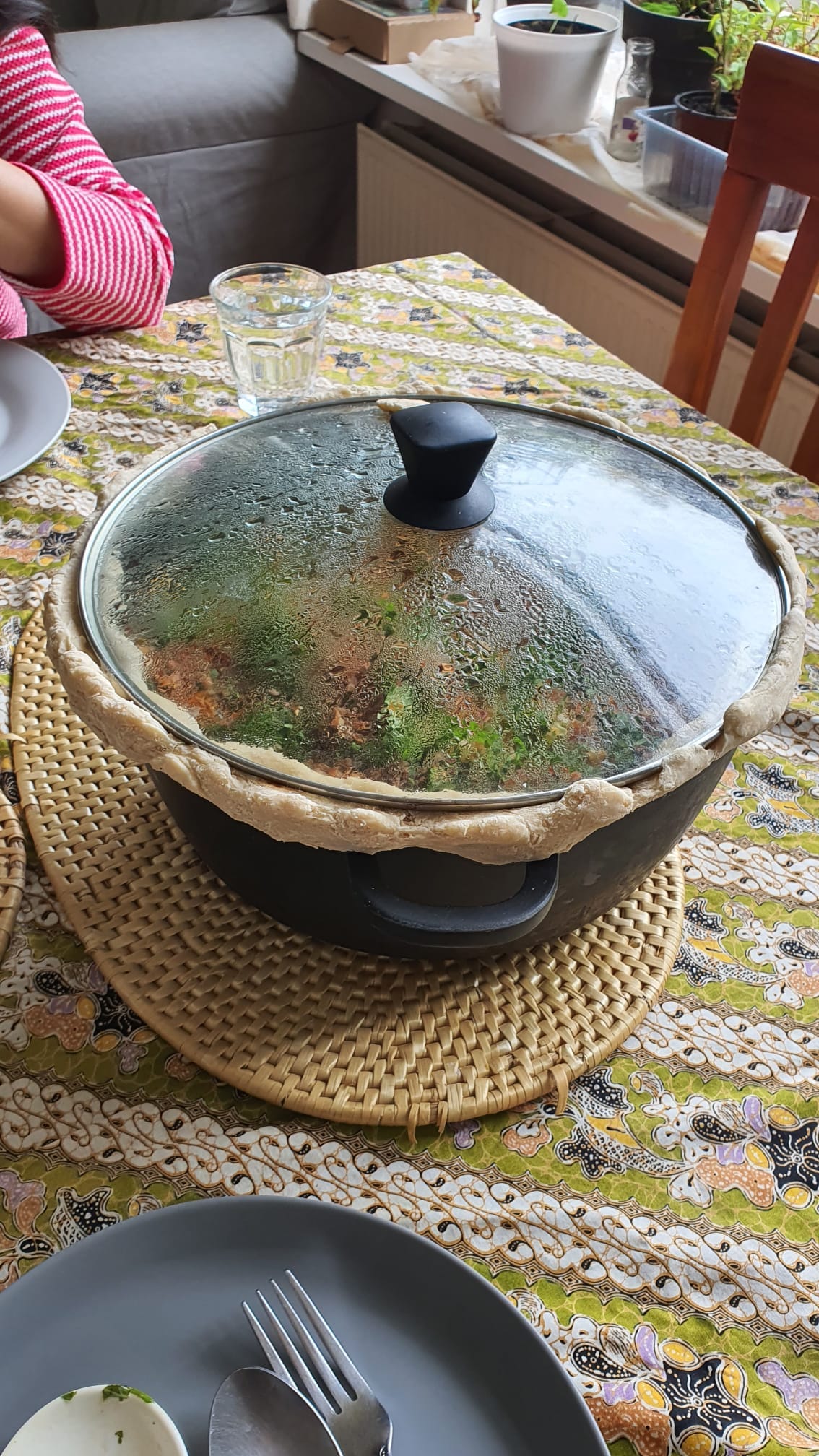✨ Welcome to Singapore Noodles, a newsletter dedicated to celebrating Asian culinary traditions and food cultures. Every Monday, you’ll be receiving a tasty mix of food history, stories, and recipes straight in your inbox. Archived recipes and other content can be found on the index. This newsletter is 100% reader-funded; each paid subscription supports the writing and research that goes into the newsletter, pays guest-writers, and gives you access to all content and recipes. Thank you for being here and enjoy this week’s post. ✨
Biryani is one of those dishes that demand a gathering; it’s not worth cooking for just two. Over the years, I’ve been enjoying making biryani at home because I can season it to my own taste and have fun with flavour combinations / protein choices. My favourite is ayam masak merah biryani. When I first started taking cooking seriously, my mom asked me what my signature dish was. Every cook has to have a signature dish, she said. For her, it was the dry mee siam that she would make every time we had a party at home. I didn’t have one and neither did I believe in one — after all, I’d grown up in the age of the internet, where my curiosity is constantly piqued by a new flavour combination or a different way of cooking a familiar dish. I don’t have a clutch of dishes in my repertoire that I’m faithful to, or that I cook repeatedly in the way that my mother’s or grandmother’s generation did. But as far as signature dishes go, I’d say that this ayam masak merah biryani would come close to being mine, by the virtue of it being something that I came up with on my own and that feels unique to my household of two (ha!). It almost feels heretical to combine two of the most classic and iconic dishes from Malay and Indian cuisines into one, but the combination really works. Everyone I’ve served the dish to seems to think so too.
Of the two dishes, ayam masak merah is less known to those outside of Singapore and Malaysia. Even less is known of its origin, though it is said to have been served in the royal courts of the Malay sultanates centuries ago. Chicken is tossed in turmeric powder and deep-fried, then coated in a sauce that is fiery from dried chillies, sweet from ketchup, umami from tomato paste, and seductively fragrant from spices such as cardamom and cassia bark. It oozes sensuality in a way that makes me think of Persian food with its lavish use of pistachios, rose petals, and harissa. As it happens, there’s also a strong link between Persia and biryani. Though it is an Indian dish, many historians believe that biryani originated in Persia and was brought to India by the Mughal Empire. A few years ago, when subscribers of Singapore Noodles gathered for a virtual biryani cookalong, ayam masak merah was the dish that I taught. Over the years, with each successive time I’ve cooked it, my approach has evolved and I’m really happy with this latest iteration of the dish. Here are some finer points I’ve picked up over the years of cooking it:
Cook the chicken a day in advance: I hate having to rush through the cooking on the day I have company, so I try to do most of the legwork the night before. That, in the context of this biryani, means to cook the ayam masak merah in advance. The key to a superlative ayam masak merah that I’ve learnt from Hartini, an incredible cook who’s contributing her recipe to my upcoming cookbook, is to deep-fry the chicken aggressively before adding it to the gravy. This not only prevents the chicken from disintegrating, but also produces that fried chicken aroma that everyone goes crazy for. Cooking the chicken well in advance helps the flavours meld together, like in any good stew or braise.
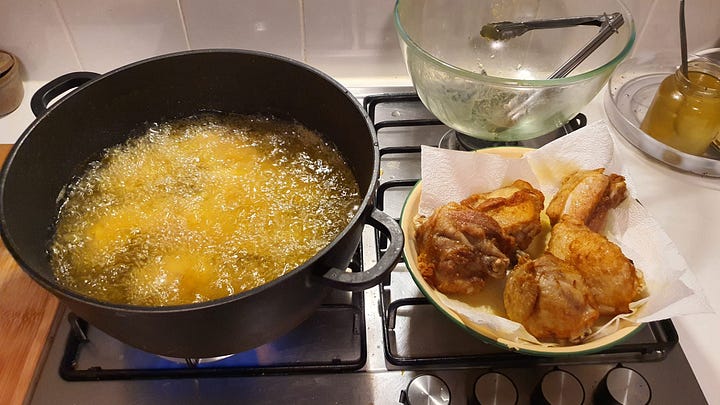

Cook the rice in a flavourful liquid: In biryani, the basmati rice is parboiled in water until it is almost done and finishes cooking after it’s been layered in the pot. The parboiling is a fantastic opportunity to introduce flavour into the rice, so I infuse the water with spices and the oft-discarded stems of coriander and mint. It’s also crucial to season the water like pasta water. When the water comes up to a boil and before the rice is added, I remove everything with a sieve because I don’t enjoy biting into bits of cardamom or black peppercorns. The people whom I’ve served biryani to in the past have really appreciated this, and I think this is one small act that shows consideration for those who eat your food.
Tossing the rice in ghee: Usually for biryani, ghee is drizzled between the layers, but I find that you get a much more uniform result when ghee is mixed into the rice. I toast raw cashews and sultanas in ghee until the cashews brown and the sultanas puff, then I toss the drained rice through the mixture. I’m very generous with the amount of cashews and sultanas that I add to my biryani because it’s a lavish, celebratory dish: you want a little cashew or sultana in every bite of rice.
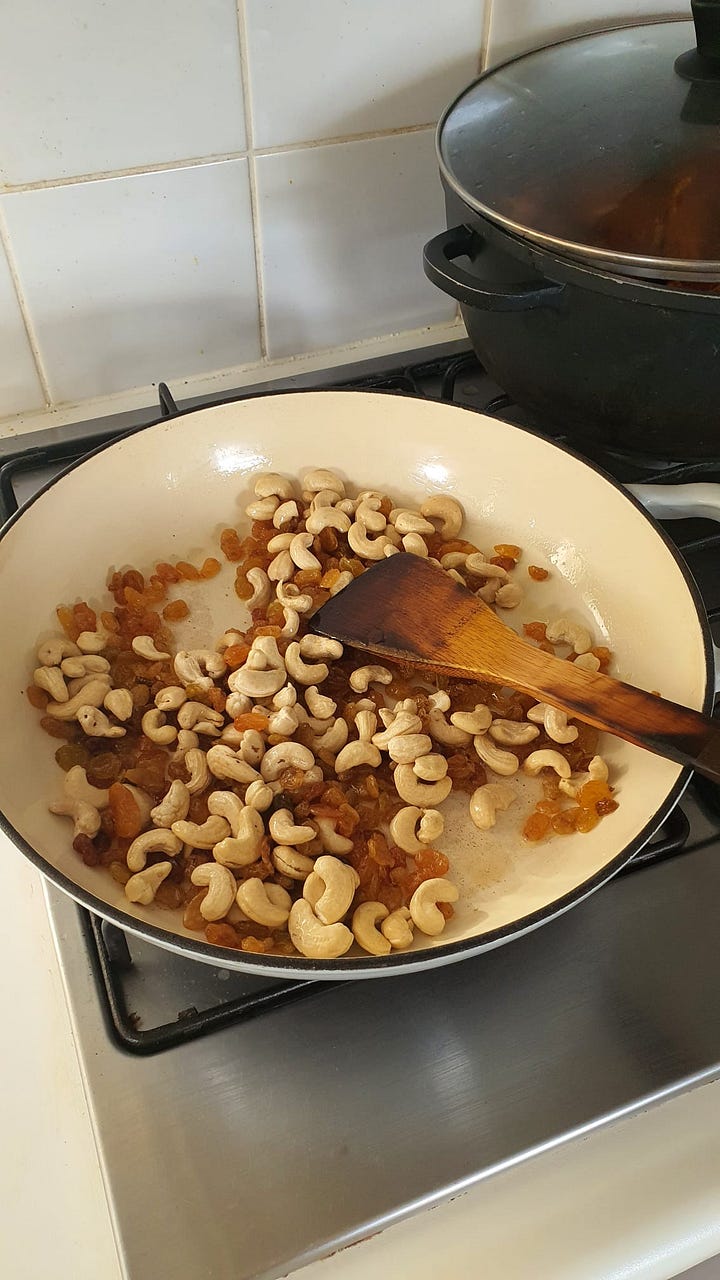
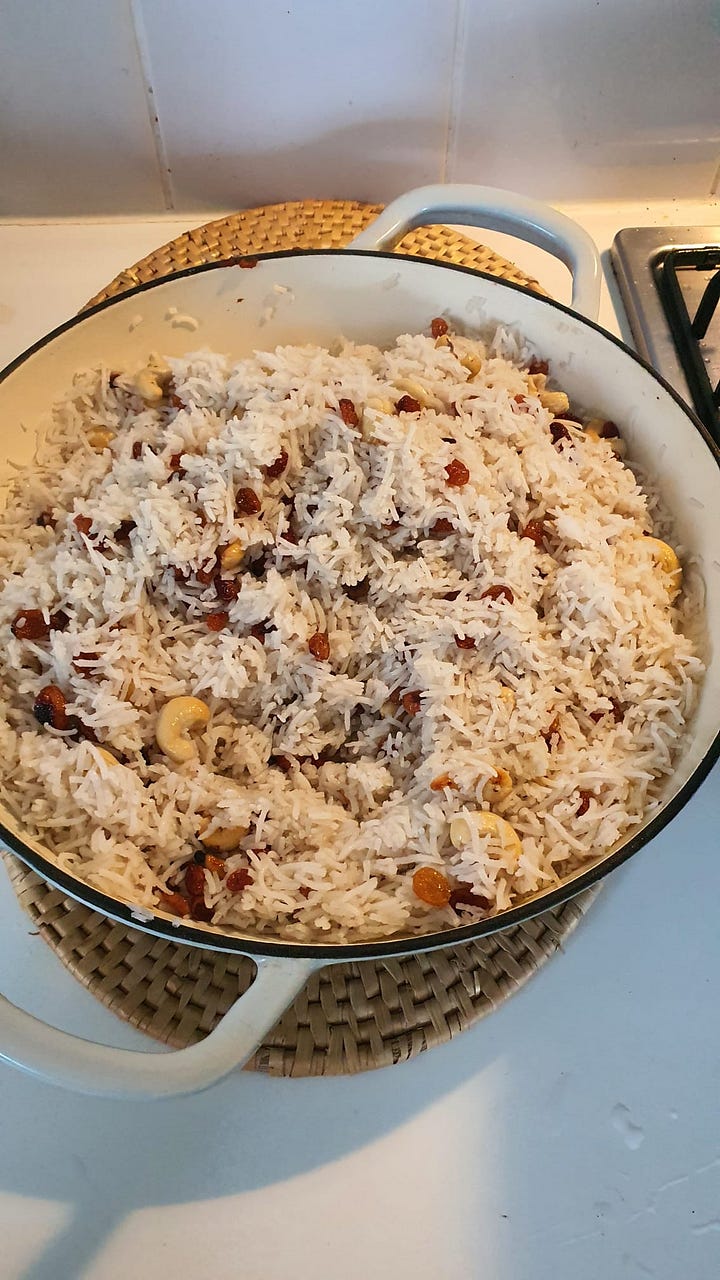
Layering the biryani: The rice and chicken are layered in the pot with herbs and birista (crispy onions). When I want to go all out, I chop a mountain of onions and fry them all in ghee (or a mixture of ghee and oil) for best flavour. But honestly, this is expensive and a lot of work. A good compromise, I’ve found, is to use store-bought fried shallots. These are delicious enough to munch on on their own and help streamline the biryani-making process. I don’t often have the entire day to cook and, while traditionalists might pooh pooh at this, fried shallots are a very good alternative in such situations.
Colouring the biryani: The most luxurious way to colour your biryani is with saffron water, but many people I’ve cooked for tell me that they are not a fan of saffron (including Wex) — they find it too perfume-like, so I skip it. On this trip back to Singapore, I learnt that local cooks use powdered food colouring mixed with water to colour their biryani. I find rosewater a sensual partner for the tomato gravy of the chicken, so I dissolve the food colouring in rosewater instead of water. You could also use a few drops of liquid food colouring if powdered food colouring is unavailable.
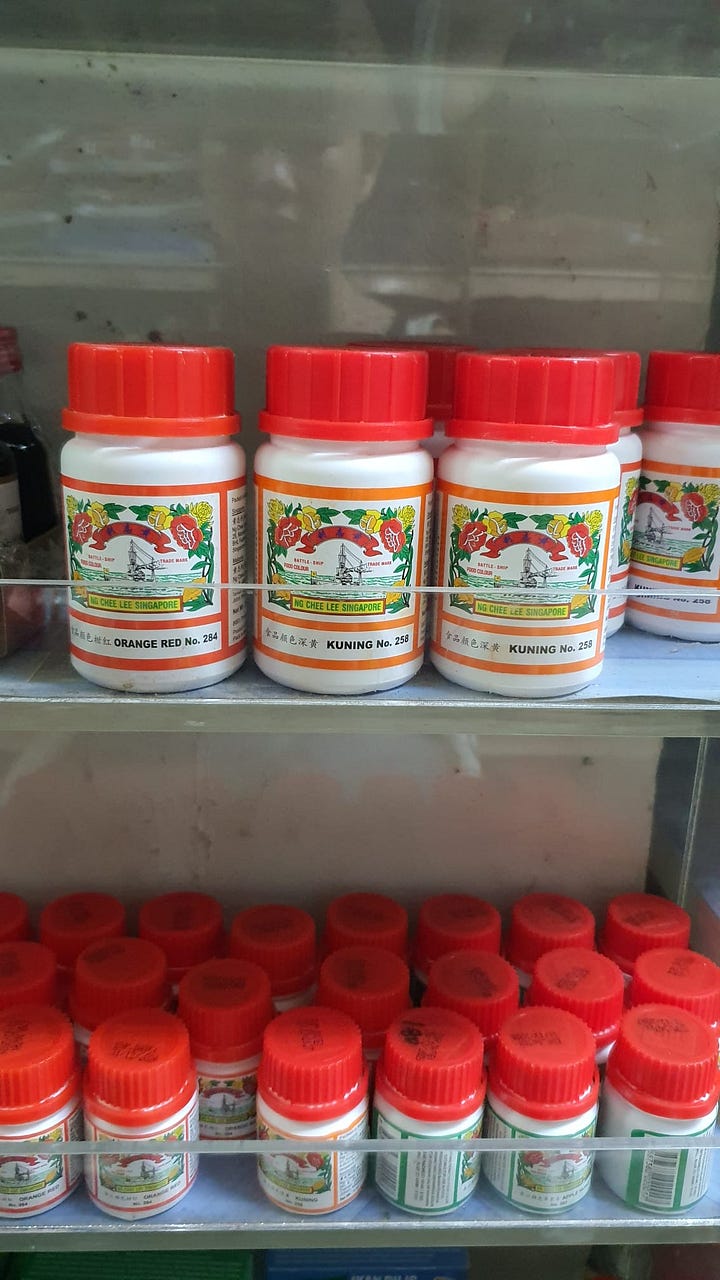
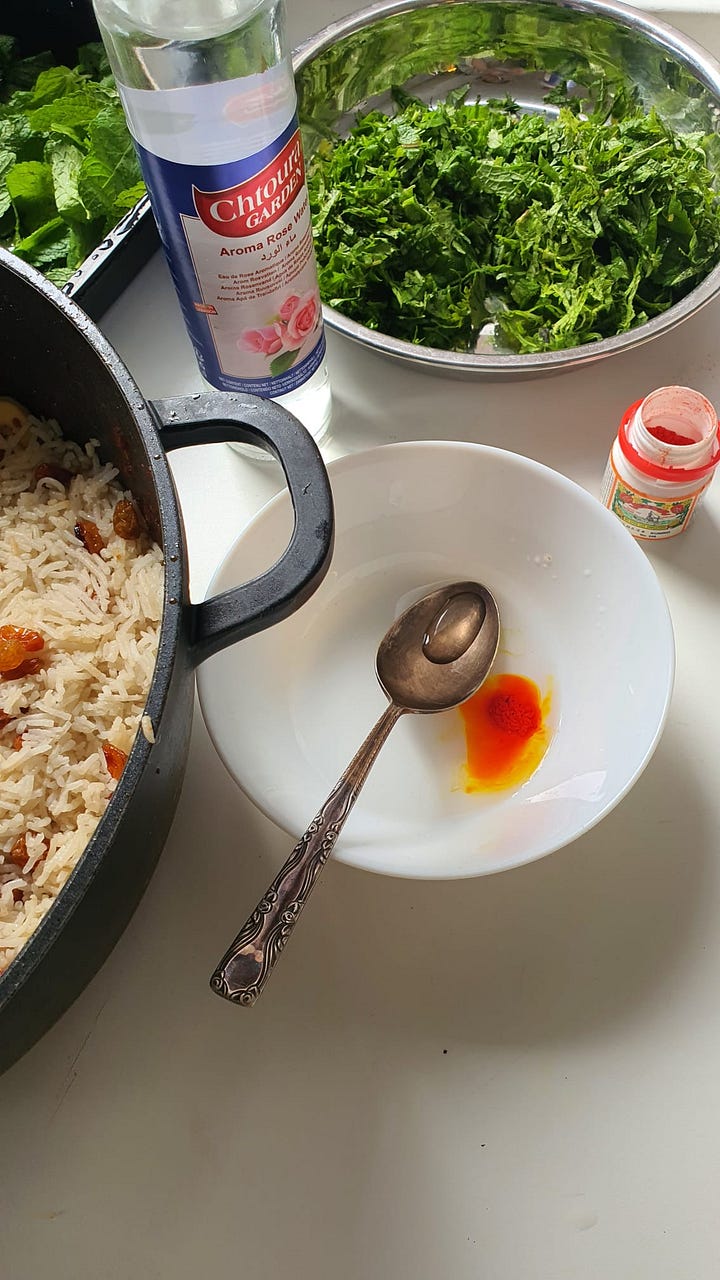
Sealing the pot: The act of sealing the pot airtight and allowing the biryani to cook in its own steam is where the “dum” in chicken dum biryani comes from. It allows the disparate flavours to mingle and I love the puff of steam that escapes from the pot when the lid is lifted. It’s a moment of unparalleled satisfaction for guests, but especially the cook.
Completing the menu: Biryani is such a time-consuming and laborious dish to make that you don’t want to have to slave over side dishes and dessert. Simple dishes that complement, rather than detract from, the biryani work best. For crunch, some pappadum are requisite. For freshness, I made a simple chopped salad of cucumber, tomato, red onion, and capsicum. I had cut everything the night before and dressed the veggies in salt, pomegranate molasses, sumac, and olive oil right before serving. The salad reinforces that Middleeastern connection in a very subtle way. Yogurt is almost always provided to cut the richness and heat of the biryani (I used kwark thinned out with water). And finally, paceri nanas, a Malay pineapple relish that goes with ayam masak merah like a match made in heaven.
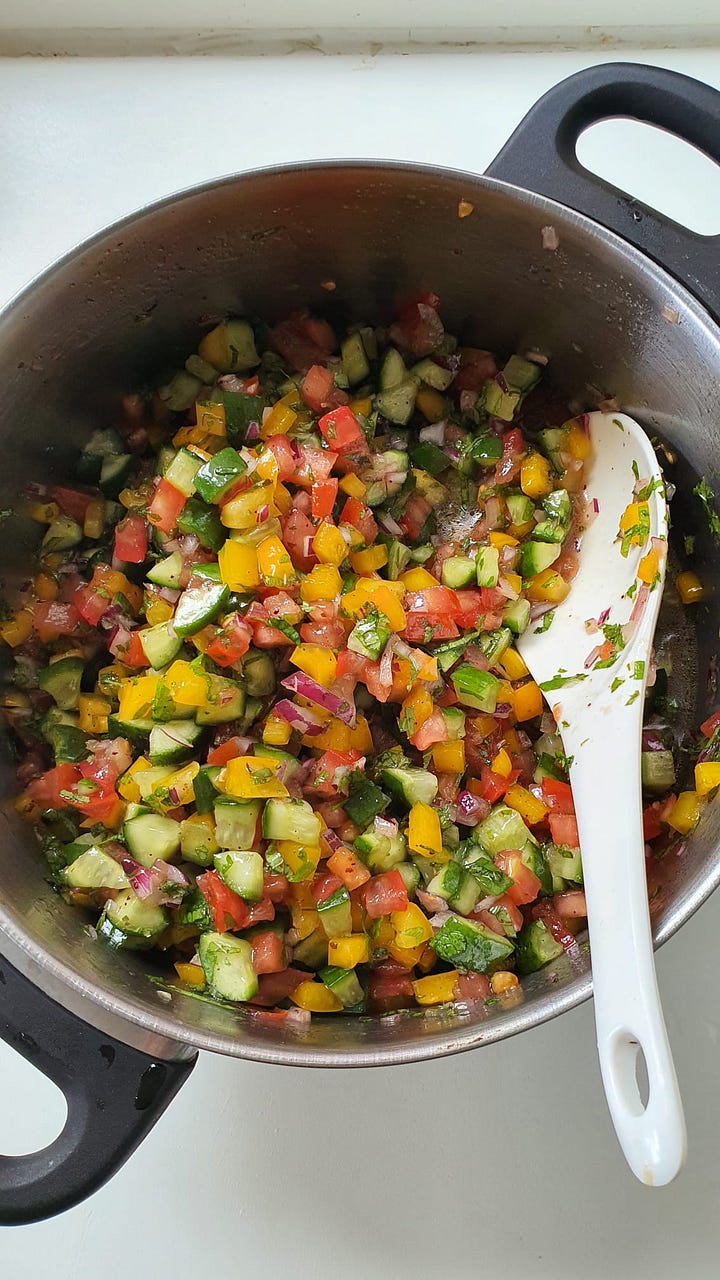
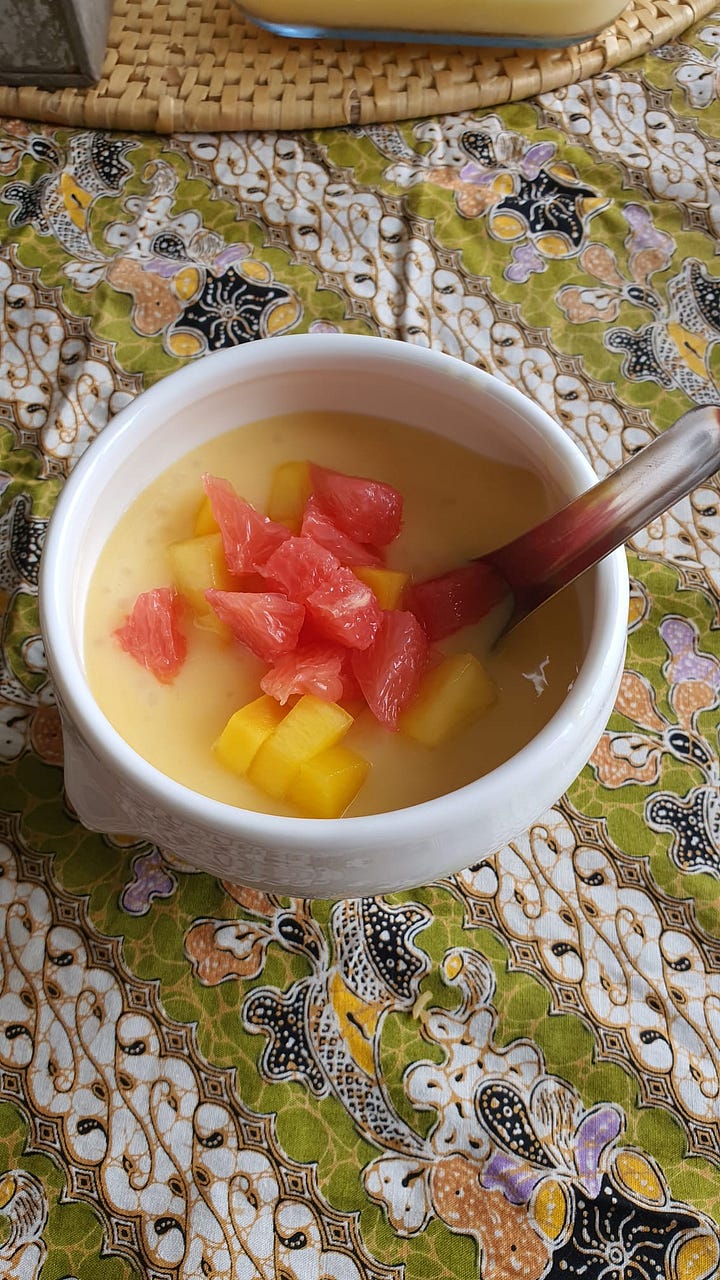
To end the meal, a simple bowl of mango sago, made lassi-style to evoke meals at Indian restaurants. Mango sago is a Chinese dessert that typically features pureed mango mixed with evaporated milk and sago, served with pomelo. I’ve used yogurt in place of evaporated milk and added a squeeze of lime (a brilliant suggestion from Wex), which lifts the flavours and prevents the “lassi” from being too heavy. The more accessible grapefruit is a great substitute for pomelo.
I didn’t even realise that Deepavali’s coming up in several weeks’ time, but it all felt very fitting in hindsight. Below, you’ll find the recipes for the ayam masak merah biryani and the lassi-style mango sago. As for the paceri, I made it according to a recipe from Hartini and it will be published in my upcoming cookbook, so you’ll just have to wait for that one! 🩷
Ayam Masak Merah Biryani
Makes 6 servings

